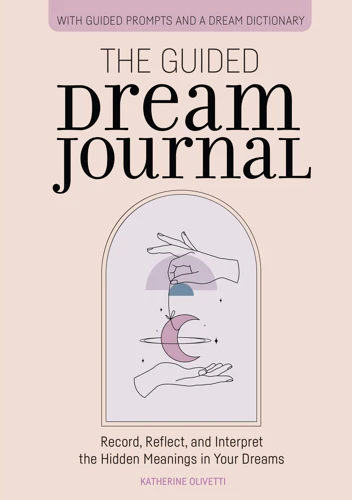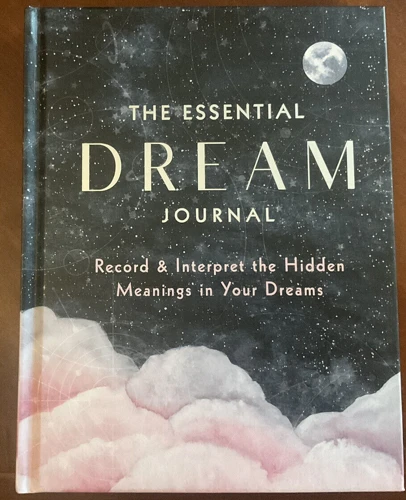The Science of Dreams

Dreams have intrigued humans for centuries. What are they? Why do we have them? Throughout history, cultures have interpreted dreams in various ways – as divine messages, warnings, or intuitive feelings. Modern science has also taken up the study of dreams, and researchers have made significant strides in understanding the phenomena. In this section, we will explore the science behind dreams, their purpose, and their benefits.
The Purpose of Dreams
Dreams have piqued the curiosity of scientists, philosophers, and scholars for centuries. While the exact purpose of dreams is still a mystery, there are several theories as to why we dream. Here are some of the key theories on the purpose of dreams:
- Problem-solving: Some researchers believe that dreams can help us solve problems we face during the day. Dreams may allow us to work through our thoughts and emotions in a safe environment, free of the constraints of the waking world.
- Unconscious desires: Sigmund Freud famously believed that dreams reveal our unconscious desires and that analyzing them could provide insight into our psyche.
- Memory consolidation: Some scientists suggest that dreams may play a role in consolidating our memories. During REM sleep, the brain processes information from the day and stores it in long-term memory.
- Emotional regulation: Dreams may also serve to regulate our emotions. When we experience traumatic events, our brains may replay them in our dreams in an attempt to help us process and cope with the emotions they evoke.
- Creativity: Finally, some researchers believe that dreams may inspire creativity by allowing us to access our subconscious thoughts and fantasies.
There is no one-size-fits-all answer to why we dream, and it is likely that dreams serve multiple purposes. As such, keeping a dream journal and exploring the hidden meanings in your dreams can lead to valuable insights into your thoughts, emotions, and experiences.
The Benefits of Dreaming
Dreaming is not only an interesting topic of discussion, but it has also been proven to have numerous benefits for our mental and emotional well-being. Research has shown that dreaming plays a crucial role in our daily lives, and although we may not always remember our dreams, they can have a profound impact on our waking life. Here are some of the benefits of dreaming:
- Problem-solving: Dreams can help us solve problems or come up with new ideas. During sleep, our brains continue to process information and can come up with solutions to problems we may be facing. Keeping a dream journal can help us remember these insights and apply them to our waking life.
- Creativity: Dreams can also stimulate creativity by allowing us to explore new ideas and possibilities. They can inspire us to create art, music, or literature. Paying attention to the details of our dreams in a dream journal can help us tap into our creative potential.
- Emotional processing: Dreams can help us process emotions that we may not be able to deal with while awake. They can provide a safe space to work through difficult emotions such as grief, anger, or fear. Writing down our dreams in a dream journal can help us identify and work through these emotions.
- Stress reduction: Dreams can also help reduce stress and anxiety by providing an escape from everyday life. They can transport us to different places and situations, giving our minds a break from the stresses of reality. Recording our dreams in a dream journal can help us identify any patterns or recurring themes that may be causing stress.
Understanding the benefits of dreaming can motivate us to pay more attention to our dreams and use them as a tool for personal growth and self-discovery.
How a Dream Journal Works

Have you ever woken up after a vivid dream and wondered what it could mean? Or had a recurring nightmare that left you feeling uneasy the next day? Perhaps you’ve even experienced a lucid dream, where you’re fully aware that you’re dreaming and can control the narrative. Whatever your experience with dreaming may be, keeping a dream journal can be a powerful tool in unlocking the hidden meanings behind the images and symbols that appear in our dreams. In this section, we’ll explore how a dream journal works and why it’s a useful technique for tracking and analyzing your dreams.
Starting a Dream Journal
Starting a Dream Journal involves setting up a system for recording your dreams. Here’s a table that outlines the steps.
| Step | Details |
|---|---|
| Choose a journal | Find a notebook or electronic device that you will dedicate solely to recording your dreams. |
| Keep it within reach | Place your journal in a convenient location near your bed so you can write down your dream as soon as you wake up. |
| Establish a routine | Commit to writing in your dream journal every morning, even if you don’t remember your dreams. This will help train your brain to remember them more clearly. |
| Create a pre-sleep ritual | Establish a calming pre-sleep ritual, such as meditating or drinking herbal tea, to help you relax and remember your dreams more vividly. |
| Use prompts | If you can’t remember your dreams when you wake up, try using prompts such as “Where was I?”, “Who was there?”, or “What was happening?” to jog your memory. |
Following these steps will help you get started on your dream journaling journey and increase your chances of recalling and interpreting your dreams.
What to Include in Your Dream Journal
When maintaining a dream journal, it’s essential to include certain details about each dream you recall. This way, you can inspect your dream patterns and uncover any hidden meanings. Here are some key things to include in your dream journal:
| Element to Include | Explanation |
|---|---|
| Date: | Write down the date on which you had the dream. This way, you can monitor dream frequency and look for potential patterns. |
| Emotions: | Note down how you felt during the dream – were you scared, happy, anxious, excited, etc.? |
| Setting: | Where did the dream take place? It’s essential to document the location and any significant details that stood out, as they can be symbolic. |
| Characters: | Were there any people or animals in the dream? Recollect their appearances, names, and personalities. |
| Events: | What transpired throughout the dream? Record any significant events and their sequence. |
| Symbols: | If any objects, colors, or sounds stood out in your dream, note them down. Later, you can attempt to interpret these symbols. |
Having a comprehensive journal filled with all the necessary details will allow you to reflect on your dreams and identify patterns over time. The more you practice, the more in-tune you will become to your subconscious, making it easier to discern hidden meanings in your dreaming adventures.
Interpreting Your Dreams

As you start recording your dreams in your dream journal, you might feel overwhelmed by the sheer amount of content your subconscious delivers while you sleep. However, don’t let this perplex you, as interpreting your dreams can be a fascinating and enlightening experience. By analyzing the symbols and themes that appear in your dreams, you can uncover hidden meanings and gain insight into your innermost thoughts and feelings. In this section, we’ll explore the art of dream interpretation and the common symbols and themes you might encounter in your dreams.
Dream Symbols and Meanings
Dream symbols are a vital component of interpreting your dreams. They are often shrouded in mystery and can be difficult to decipher, but with a little knowledge and intuition, they can provide valuable insights into your subconscious desires, fears, and motivations. Here are some common dream symbols and their possible meanings:
- Water: Water is often associated with emotions and the subconscious mind. Calm water may represent peace and tranquility, while rough or murky water may indicate turmoil or uncertainly.
- Animals: Animals in dreams can represent various emotions, instincts, or aspects of yourself. For example, a fierce lion could indicate courage, strength and leadership, while a timid rabbit could signify vulnerability or shyness.
- Death: While dreaming about death may seem scary, it does not necessarily mean that someone will die. Instead, it could indicate the end of one phase of your life and the beginning of another.
- Flying: Dreams about flying can indicate a sense of freedom and release. It can also represent the idea of rising above issues or obstacles in your life.
- Teeth: Dreaming of teeth can represent anxiety or feelings of insecurity in waking life. Broken or missing teeth may suggest a lack of confidence, while strong and healthy teeth could signify strength and assertiveness.
It is important to remember that dream symbols are subjective, and their meanings can vary depending on the individual. Consider your own personal associations and memories when interpreting your dreams. Keeping a dream journal can help you track patterns and themes in your dreams, which can lead to a deeper understanding of your subconscious mind. With practice, you can become a skillful interpreter of your own dreams and unlock the hidden meanings lurking within.
Common Dream Themes and Their Interpretations
It’s not uncommon to experience similar dreams to others — especially in terms of the themes that arise. Here are some of the most common dream themes and their interpretations:
- Falling: This dream theme is often associated with feeling vulnerable or experiencing a loss of control in your waking life.
- Being Chased: Dreams that involve being chased can indicate that you are avoiding problems or fears.
- Flying: Dreams of flying can represent a feeling of freedom and empowerment.
- Teeth Falling Out: This dream theme can symbolize anxiety or a fear of losing power or control in your life.
- Nakedness: Dreaming of being naked can indicate feelings of vulnerability or shame.
- Being Lost: Dreams of being lost can represent feeling directionless or overwhelmed in your waking life.
- Death: Dreams of death can symbolize major changes or endings in your life, rather than actual death.
It’s important to note that dream interpretation is highly personal and can vary based on the individual. While these interpretations may provide some insight, it’s ultimately up to the dreamer to determine the meaning of their own dreams. Keeping a dream journal can aid in this process by allowing you to track recurring themes and symbols in your dreams over time.
The Power of Lucid Dreaming
Perhaps one of the most awe-inspiring experiences you can have is the moment when you realize that you’re dreaming within a dream – that you’re in complete control of the world around you. This phenomenon is known as lucid dreaming and it’s an incredible ability that can unlock a new level of understanding about the inner workings of your mind. With the power to control your dreams and explore your subconscious, this state of consciousness has gained popularity over the years thanks to its potential to help people grow and overcome personal struggles. Let’s delve into the science behind lucid dreams and the techniques you can use to become a master of your own dreamscape.
What is Lucid Dreaming?
Lucid dreaming occurs when a person becomes aware that they are dreaming while still in the dream state. This means that the dreamer is conscious of the fact that the events taking place are not happening in real life, but rather in their own mind. This type of dreaming opens up a realm of possibilities for the dreamer, allowing them to fully control and manipulate their dream world.
During a lucid dream, the dreamer can change the world around them, explore new places, and even interact with other dream characters. Many people use lucid dreaming to work on personal growth, confront fears, or simply experience things that they wouldn’t otherwise have the chance to do in real life.
However, not everyone is able to achieve lucid dreaming regularly. It takes time and practice to train yourself to recognize when you are dreaming and to maintain that awareness throughout the dream. But with patience and dedication, anyone can learn to lucid dream.
Some people use techniques like reality checks, where they perform a specific task throughout the day and ask themselves whether or not they are dreaming, in order to train their brain to recognize when they are dreaming. Other techniques include setting intentions before bedtime, practicing meditation, and keeping a dream journal. There is no one-size-fits-all approach to lucid dreaming, so it’s important to experiment with different techniques to find what works best for you.
Techniques for Lucid Dreaming
To experience lucid dreaming, where you are aware that you are dreaming and can even control the dream, there are several techniques you can try. Here are some popular methods:
- Reality checks: Throughout the day, make a habit of questioning if you are dreaming or awake. Look at your hands and ask yourself, “Am I dreaming?” If you do this habitually, you will start to question reality even when you are asleep, which can lead to lucidity.
- Mnemonic induction of lucid dreams (MILD): Before you fall asleep, repeat to yourself that you will become lucid in your dreams. Visualize yourself becoming aware and in control. Repeat the phrase like a mantra and fall asleep with the intention in your mind.
- Wake back to bed (WBTB): Set your alarm to wake up after 4 or 5 hours of sleep. Stay awake for 20-30 minutes and think about lucid dreaming. Then go back to sleep with the intention of becoming lucid. This method works because you are more likely to enter a REM (rapid eye movement) phase, which is when most dreaming occurs.
- Wake-initiation of lucid dreams (WILD): With this technique, you aim to transition from a waking state directly into a lucid dream. Lie in bed and let your body fall asleep while keeping your mind awake. Focus on your breathing or a mantra. You may experience sleep paralysis, but try not to panic.
- Reality testing: This technique works by trying to incorporate reality into your dream. Set an alarm for the middle of the night, and when you wake up, try to remember a recent dream. Then, create a scenario where you can validate that you are dreaming. For example, in a dream, a light switch may not work or you can’t read text on a page. Then, try to control the dream.
These techniques may take some practice, but with consistency, you may be able to experience the incredible power of lucid dreaming. Remember to keep a dream journal to record your lucid dreams and the insights and messages they may offer.
Conclusion
In conclusion, keeping a dream journal can be an incredibly powerful tool for unlocking the hidden meanings in your dreams. By recording your dreams on a regular basis, you can begin to identify patterns and recurring themes in your dreams which can lead to a greater understanding of your subconscious mind.
Remember to include as much detail as possible in your dream journal, including emotions, colors, and any significant objects or people that appear in your dreams. By doing this, you can begin to see the underlying symbolism and connections between your dreams and your waking life.
Interpreting your dreams can be a challenging process, but it’s important to approach it with an open mind and a willingness to explore the deeper meaning behind your dreams. Keep in mind that different symbols and themes can have different meanings for different people, so it’s important to pay attention to your own intuition and personal associations when interpreting your dreams.
Finally, consider experimenting with lucid dreaming techniques to take your dream journaling practice to the next level. With practice, you can learn to control your dreams and use them as a tool for personal growth and self-discovery.
Overall, a dream journal can be a powerful way to connect with your subconscious mind, gain insight into your deepest desires and fears, and unlock the hidden meanings behind your dreams. So why not start your own dream journal today and see where your dreams take you?
Frequently Asked Questions
How often should I write in my dream journal?
It is recommended to write in your dream journal every morning, as soon as you wake up.
What if I can’t remember my dreams?
Even if you don’t remember your dreams, make a note of it in your journal. Over time, you may begin to remember more details.
Can I use my phone or computer to record my dreams?
It is recommended to use a physical journal or notebook to record your dreams, as the act of handwriting can help you remember them better.
What if my dreams are disturbing or scary?
It’s important to not judge your dreams and simply record them as objectively as possible. However, if the dreams are causing you distress, it may be helpful to speak with a therapist or counselor.
What if I have trouble interpreting my dreams?
There are many resources available, including books and online resources, that can help with dream interpretation. You can also speak with a therapist or counselor.
Can I use my dream journal to plan lucid dreams?
Yes, you can use your dream journal to identify recurring dream symbols and themes, which may help you become aware when you are dreaming and achieve lucidity.
Do I have to write down every detail of my dreams?
No, you don’t have to write down every detail. Focus on the most salient aspects, such as emotions, people, and settings.
Can I share my dream journal with others?
Yes, you can share your dream journal with others, but it’s important to remember that the interpretation of the dreams is personal and subjective.
Can I use my dream journal to track my progress in therapy?
Yes, you can use your dream journal to track your progress in therapy, as dreams can offer insights into unconscious thoughts and feelings.
Can I use my dream journal for creative writing?
Yes, you can use your dream journal for creative writing, as dreams can be a source of inspiration for art and literature.









